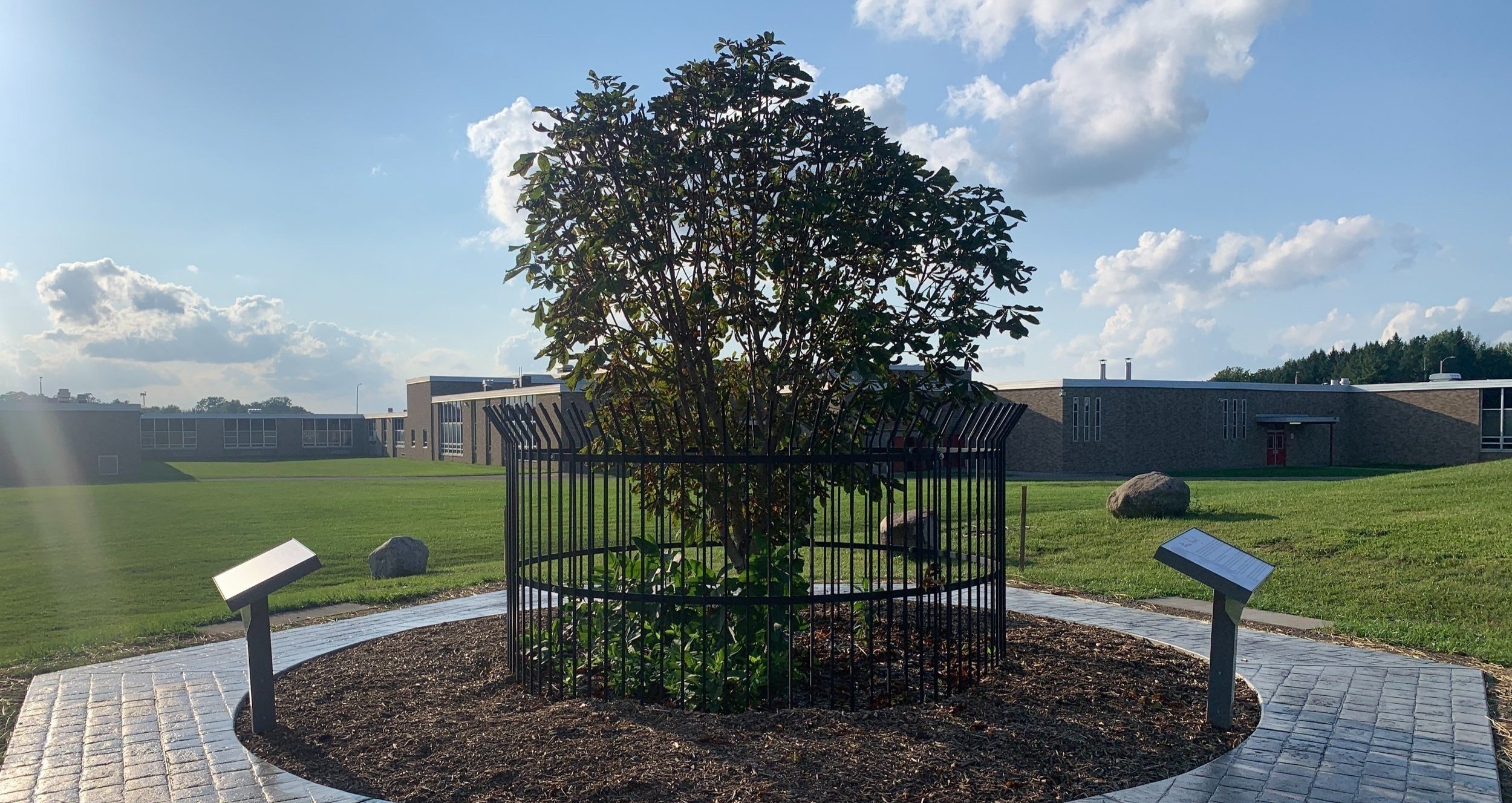
Our Site
The Southern Cayuga Anne Frank Tree was planted at the Southern Cayuga School in Poplar Ridge, an area strongly influenced by Quakers who believed in the equality of all men and women. What better way to promote equity than to have our sapling in the care of other children, our future? The District’s elementary school is named after Miss Emily Howland, who not only worked side by side with Elizabeth Cady Stanton and Susan B. Anthony but also founded many schools for freed blacks and their children in the South. The site is located near the homes of Harriet Tubman and William H. Seward, both abolitionists who lived in Auburn. The Women’s Hall of Fame is located in nearby Seneca Falls, and Fort Ontario lies to the north of the school which housed Jewish refugees during World War II.
The Southern Cayuga Anne Frank tree site, designed by Phil Donovan, is layered with references and imagery. The hexagonal shape is the internal shape of the Star of David. The use of cobblestone refers to the streets of Europe. Surrounding the cobblestone will be eleven boulders, representing the number of Anne Frank trees given to US locations. Four of these boulders will be of the same type of stone. These four boulders reference Marion Blumenthal Lazan’s metaphor of four perfect pebbles used in her book of the same name. Four is also the number of members in Anne’s family and the number of people who helped those hiding in the annex. In addition to the use of specific materials and shapes, the dimensions of the site have been carefully considered, referencing the number 18 because of its significance in Jewish culture.
Dedication Letter from Gov. Andrew Cuomo
New York State Legislative Resolution

